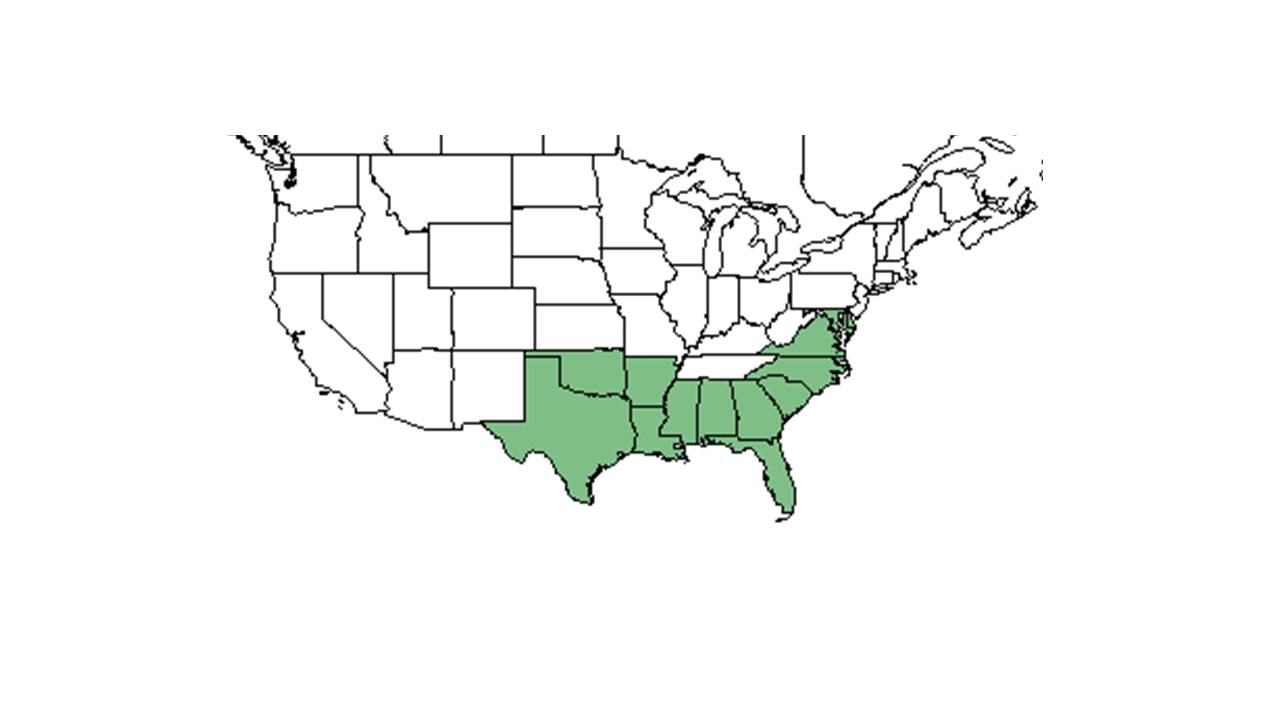Elephantopus nudatus
| Elephantopus nudatus | |
|---|---|

| |
| Scientific classification | |
| Kingdom: | Plantae |
| Division: | Magnoliophyta - Flowering plants |
| Class: | Magnoliopsida – Dicotyledons |
| Order: | Asterales |
| Family: | Asteraceae ⁄ Compositae |
| Genus: | Elephantopus |
| Species: | E. nudatus |
| Binomial name | |
| Elephantopus nudatus A. Gray | |

| |
| Natural range of Elephantopus nudatus from USDA NRCS Plants Database. | |
Contents
Description
Common Name: smooth elephantsfoot
Distribution
Ecology
Habitat
Is found in edges of swamps, creek bottomlands, hammocks, Longleaf pine-wiregrass savannas, edges of deciduous forests, open pine flatwoods, boggy bottomlands, in wooded area above floodplains and in floodplains, in mesic flatwoods, and edges of ponds (FSU Herbarium). Is also found in human disturbed areas such as along the roadsdie, flatwoods that have been clear cut, and in lawn adjacent to parking lot area (FSU Herbaruim). Can thrive in areas of low light or high light levels (FSU Herbarium). Is associated with moist, loamy sand; fine, sandy soils; alluvial sands; and loamy humus soil types (FSU Herbarium).
Phenology
Has been observed flowering in September (Panflora) and October (FSU Herbarium).
Seed dispersal
Seed bank and germination
Fire ecology
Pollination
Use by animals
Diseases and parasites
Conservation and Management
Cultivation and restoration
Photo Gallery
References and notes
Florida State University Robert K. Godfrey Herbarium database. URL: http://herbarium.bio.fsu.edu. Last accessed: June 2014. Collectors: Loran C. Anderson, D. B. Ward, Robert K. Godfrey, R. D. Houk, D. B. Ward, S. S. Ward, Jean W. Wooten, R. Kral, Almut G. Jones, R. A. Norris, R. Komarek, and Cecil R Slaughter.
States and Counties: Florida: Baker, Escambia, Franklin, Gadsden, Gulf, Hamilton, Jefferson, Leon, Liberty, Marion, Nassau, Putnam, Santa Rosa, St Johns, Union, Wakulla, and Walton. Georgia: Grady and Thomas.
Gil Nelson’s Panflora database. URL: http://www.gilnelson.com/PanFlora. Last accessed July 2015.